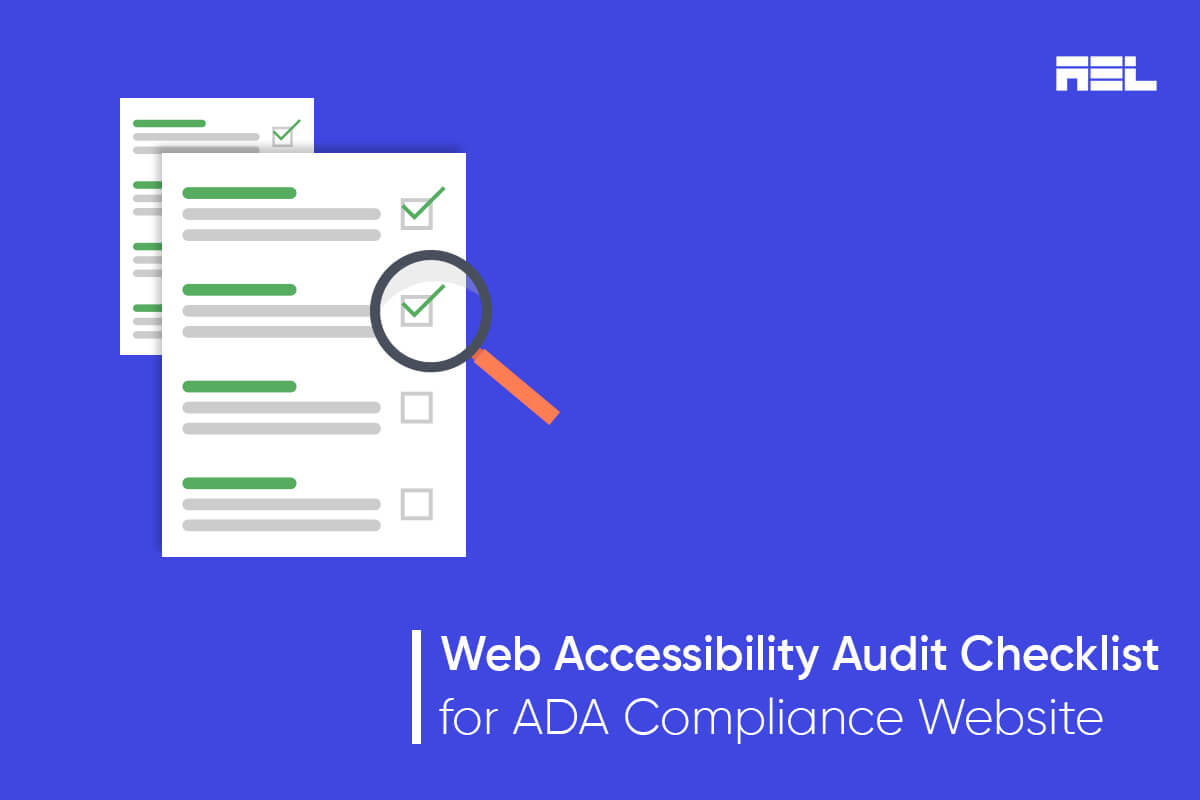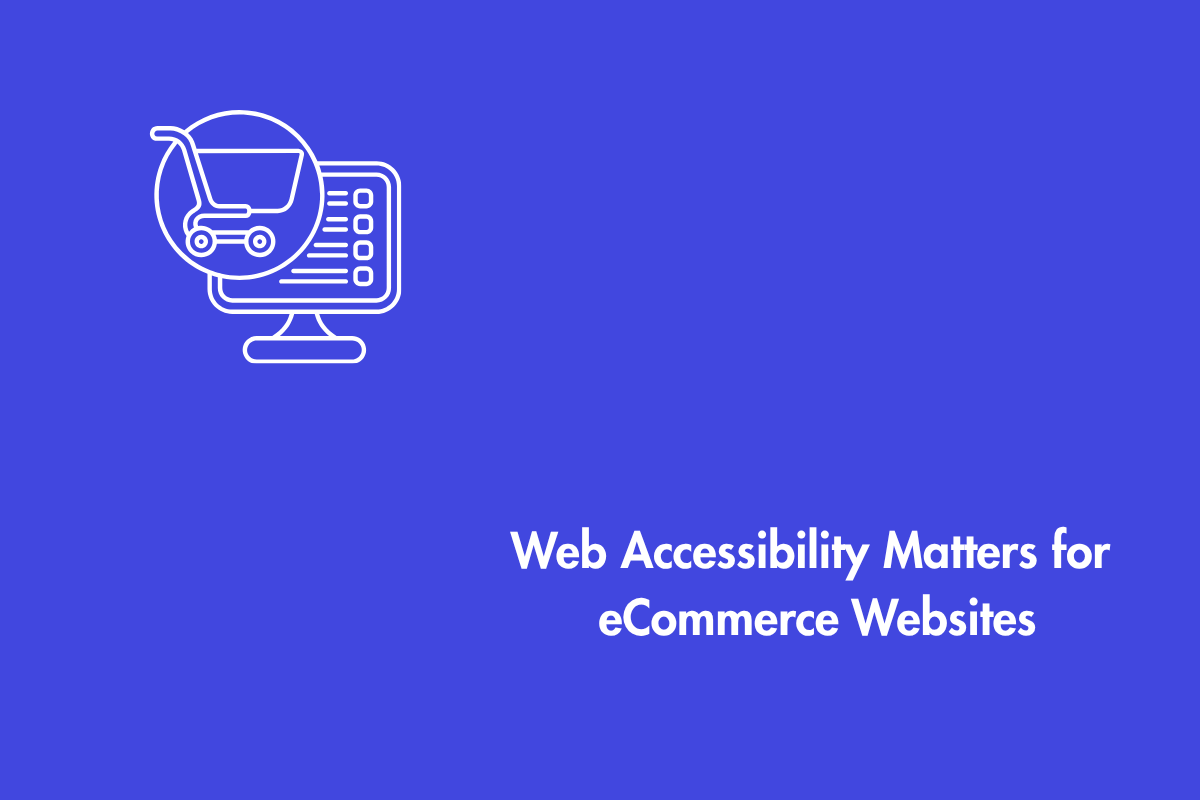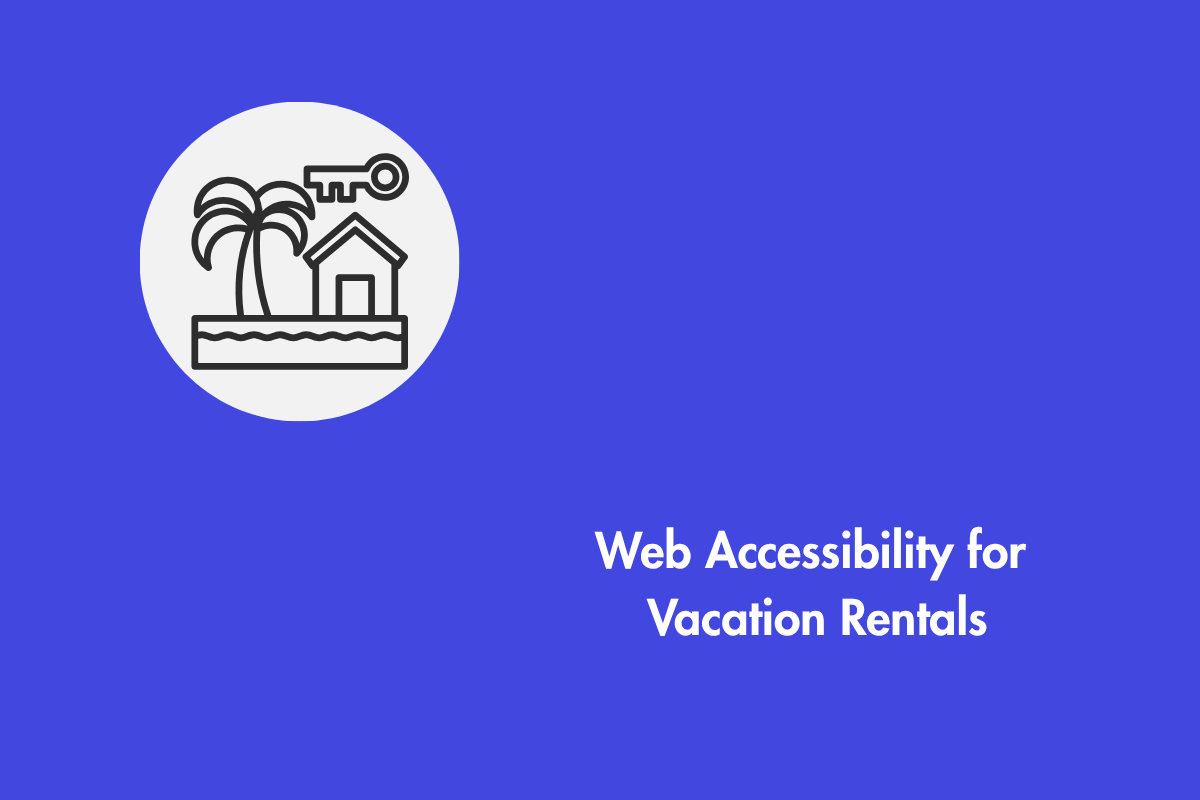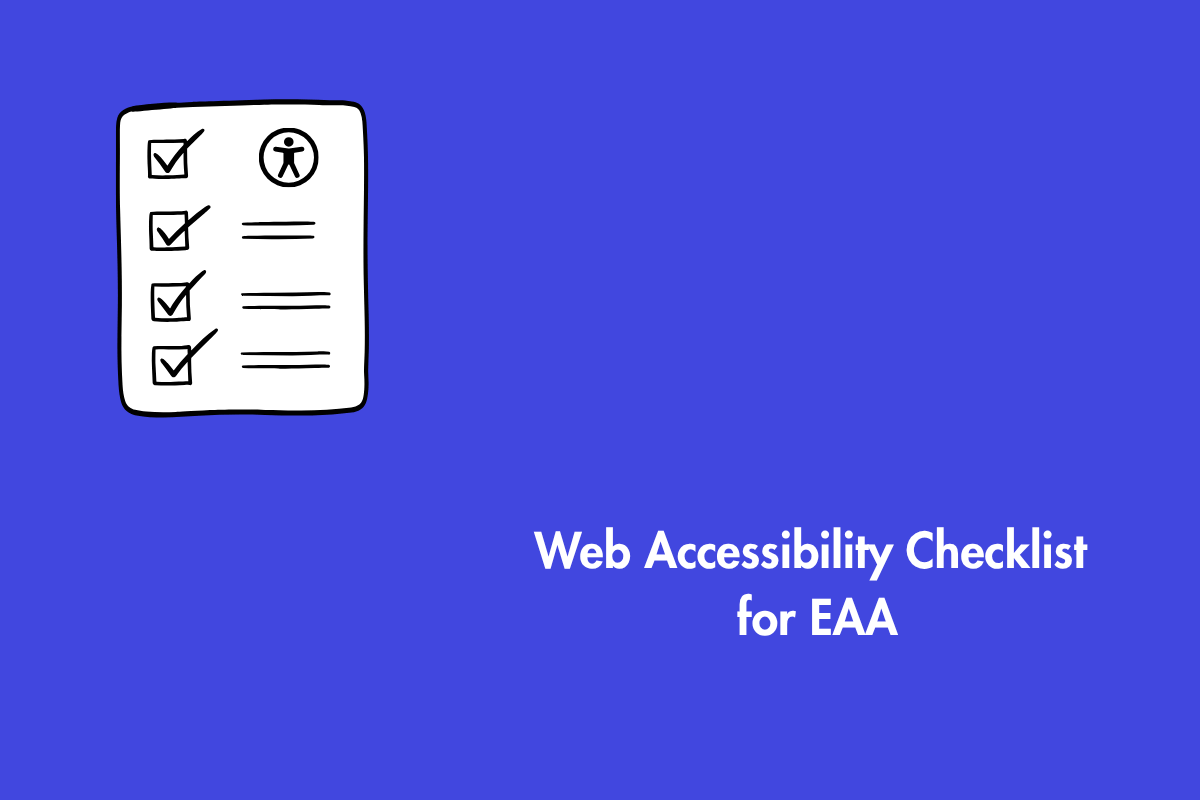Currently, approximately 1.3 billion people worldwide have some form of disability.– About 311 million use the internet often. This means many internet users could have disabilities.
No matter what business you’re in, your website would cater to users with disabilities. So, it’s vital that everyone can access your website developed with a tested ADA audit checklist.
The Web Content Accessibility Guidelines, WCAG as it is called, are touted as universal standards to consider while developing a completely accessible website or web application and this contributes wholly to the disability access audit checklist that we list in the below sections.
In this article, we explore what you would need to do to ensure your website meets the fundamental rules for accessibility.
Table of Contents
- 1 What is ADA Compliance?
- 2 How are ADA Compliance and WCAG related?
- 3 Advantages of Adhering to ADA Compliance for Users and Businesses
- 4 How to be Prepared for ADA Compliance Accessibility Audit?
- 5 Why should you perform Web Accessibility Audits?
- 6 Key Components of the Accessibility Audit Checklist
- 6.1 1. Text alternatives for non-text content (e.g., alt text for images)
- 6.2 2. Captions and transcripts for multimedia content
- 6.3 3. Proper use of headings and semantic HTML
- 6.4 4. Ensuring color contrast and text readability
- 6.5 5. Keyboard accessibility and focus management
- 6.6 6. Navigable link and button labels
- 6.7 7. Avoiding content that causes seizures (e.g., no flashing or strobing lights)
- 6.8 8. Informative error messages and suggestions for corrections
- 6.9 9. Compatibility with assistive technologies
- 6.10 10. Use of ARIA (Accessible Rich Internet Applications) roles and properties
- 6.11 11. Valid HTML and CSS to ensure proper rendering and accessibility
What is ADA Compliance?
The ADA, enacted in 1990, is a civil rights law that prohibits discrimination based on disability. ADA compliance stands for the Americans with Disabilities Act Standards for Accessible Design, which requires all electronic information and technology to be accessible to individuals with disabilities.
The chief role of this act is to make sure everyone has equal opportunitiesin all walks of life such as government services, jobs, transportation, and communication.
How are ADA Compliance and WCAG related?
ADA compliance and WCAG (Web Content Accessibility Guidelines) are closely related in the context of ensuring accessibility for individuals with disabilities, particularly in digital environments like websites.
ADA (Americans with Disabilities Act) is a comprehensive civil rights law that mandates accessibility for individuals with disabilities in various aspects of public life, including digital spaces. ADA compliance ensures that websites and digital content are accessible to people with disabilities.
WCAG, on the other hand, provides specific technical guidelines for making web content more accessible. These guidelines are developed by the World Wide Web Consortium (W3C) and are widely accepted as the international standard for web accessibility. They offer detailed recommendations for making websites perceivable, operable, understandable, and robust for users with disabilities.
Advantages of Adhering to ADA Compliance for Users and Businesses
Here is how adhering to ADA compliance can be a strategic advantage for both users and businesses:
- Enhances customer experience: Accessible facilities like ramps and wider doorways cater to a diverse range of individuals, ensuring seamless experiences and boosting customer satisfaction.
- Expands market reach: With over 1 billion people globally having disabilities, creating accessible facilities taps into a significant market segment, increasing customer base and revenue.
- Promotes inclusivity: Prioritizing accessibility demonstrates commitment to inclusivity, fostering a sense of community and social integration.
- Ensures legal compliance: Meeting accessibility regulations avoids legal issues and financial penalties. It also helps in maintaining a positive business reputation.
- Boosts employee morale: Inclusive workplaces improve job satisfaction and productivity, reducing turnover and enhancing overall workplace atmosphere.
- Cost-effective: Initial investments in accessibility features like ramps can save money long-term by preventing injuries and lawsuits.
In addition to the above points, the ADA acts as a framework, in combination with WCAG, for building an accessibility audit checklist.
How to be Prepared for ADA Compliance Accessibility Audit?
This is an audit process that is carried out in a thorough manner, vetting the website from code to the UI, and is actually used to check the ease of use for people with disabilities to use a website, web app, or mobile app using an accessibility audit template. This audit measures how well the digital content follows the WCAG guidelines, which help make online content accessible to everyone.
This audit uses both automated tools and human reviewers. Automated accessibility testing tools can find some issues automatically, but they usually only catch about 30-40% of the problems. That’s why human checks are vital.
These involve using tools like keyboards, color contrast checkers, and assistive technologies. Manual web accessibility checks help find issues that automation might miss, making sure the digital content is accessible to everyone.
Why should you perform Web Accessibility Audits?
Accessibility audits are crucial to ensure that digital content, products, and services are functional and inclusive for everyone..
These audits carefully check websites, apps, and digital platforms to find any barriers that might hinder people with disabilities from using them.
In today’s connected world, digital accessibility isn’t just a legal mandate but also a moral imperative. Making sure your digital content is accessible expands your audience, including individuals with diverse impairments.
With these audits, preferably, with the aid of a disability audit checklist, businesses can find accessibility problems, fix them, and give everyone an equal experience.
Let’s begin with learning about a few accessibility tools:
- WAVE Evaluation Tool: This tool evaluates your URL for accessibility gaps and provides a summary of errors and alerts. It visually enhances your web content with icons and indicators.
- Color Contrast Analyzer: This extension checks text color contrast on web pages, ensuring compliance with WCAG 2 requirements. It takes care of text over gradients and advanced CSS.
Accessibility Testing Tool (LERA): LERA offers automated testing and detailed reports on your website’s accessibility. It is noteworthy that this tool is freeware and offers comprehensive audits and reporting without requiring credit card details to be added beforehand.
Key Components of the Accessibility Audit Checklist
This might as well be used as a disability access audit template for any web app developed for users at large.
1. Text alternatives for non-text content (e.g., alt text for images)
ALT attributes are utilized in website design to offer alternative text for any non-text elements, such as images, audio, video, and more. The primary goal of including an alt attribute is to ensure that users who cannot view these elements due to disability, incompatible web browsers, or slow internet speeds still have access to the same information.
2. Captions and transcripts for multimedia content
Captions and transcripts are crucial accessibility components. Transcripts enhance search engine optimization (SEO), helping your multimedia content reach a broader audience. Captions are synchronized with video presentations and detail significant sounds, including important music cues and sound effects.
3. Proper use of headings and semantic HTML
Heading tags, also known as H tags or header tags, organize website content into subsections, crucial for longer articles. These tags aid navigation for people with disabilities using assistive technologies like screen readers. Proper use of heading tags enhances website accessibility and ensures a consistent user experience, expanding your site’s accessibility and usability.
4. Ensuring color contrast and text readability
According to WCAG standards, a minimum contrast ratio of 4.5:1 is recommended for most text, including text within images. It’s advised to avoid using images for text to ensure accessibility for screen readers.
Larger on-screen text, defined as 18-point or 14-point bold fonts (between 120% and 150% of the typical font size), can be easier to read even at lower contrast ratios, assuming users do not resize the text themselves.
5. Keyboard accessibility and focus management
Many users with disabilities depend on keyboard navigation, where the Tab key moves them through interactive elements like links, buttons, and input fields on web pages. Each item tabbed to gains keyboard “focus,” allowing it to be activated or controlled via the keyboard.
Web browsers automatically provide focus indicators, typically appearing as a border or highlight (outline) around the selected element, although their exact appearance may differ across browsers.
6. Navigable link and button labels
Users generally should decide if they want to open a link in the same tab or a new tab. Forcing links to open in new tabs can confuse users, especially those using screen readers.
For pages like search result hubs, consider using the aria-label attribute on links to offer more descriptive text for screen reader users, maintaining consistency for all users.
7. Avoiding content that causes seizures (e.g., no flashing or strobing lights)
People with photosensitive seizure disorders can be affected by flashing content that exceeds certain frequencies or flash rates. WCAG 2.0 originally used a 1024 x 768 screen resolution as a reference point for accessibility evaluations. The 341 x 256 pixel block represents a 10-degree viewport at a typical viewing distance, focusing on the eye’s central vision area, where photosensitive responses are most likely to occur.
8. Informative error messages and suggestions for corrections
Users with cognitive challenges might struggle to comprehend error corrections, while those with visual impairments could face difficulties understanding how to rectify errors. When a form submission fails, users may abandon it due to uncertainty about error correction, even if they know an error occurred.
Error descriptions can be supplied by content authors or user agents, using technology-specific, programmatically accessible details.
9. Compatibility with assistive technologies
Ensure compatibility with present and future user agents, particularly assistive technologies (AT) by preventing practices that could disrupt AT (e.g., incorrect markup) or bypass them (e.g., unconventional code). Additionally, promoting exposing content information in standard formats that AT can properly interpret and engage with.
10. Use of ARIA (Accessible Rich Internet Applications) roles and properties
WAI-ARIA offers tools for creating accessible user interface elements, enhancing web content and app accessibility and interoperability. It targets developers of web browsers, assistive technologies, user agents, and those creating web technologies and accessibility evaluation tools.
11. Valid HTML and CSS to ensure proper rendering and accessibility
Ensuring your HTML and CSS code adheres to web standards and validates properly is crucial for ensuring compatibility across various browsers and assistive technologies. Valid code helps maintain consistent rendering and accessibility features, ensuring a seamless experience for all users, including those relying on assistive devices.
Wrapping Up
It may be overwhelming to ensure that your website is always accessible and follows updated guidelines, and your business needs to constantly meet legal requirements.
At AEL Data, we make it easier for you by crafting personalized websites and captivate your audience. From descriptive image captions to intuitive navigation, our tailored web design method lets us add features as required, making your website visible, easy to use, captivating, and reachable to all.



